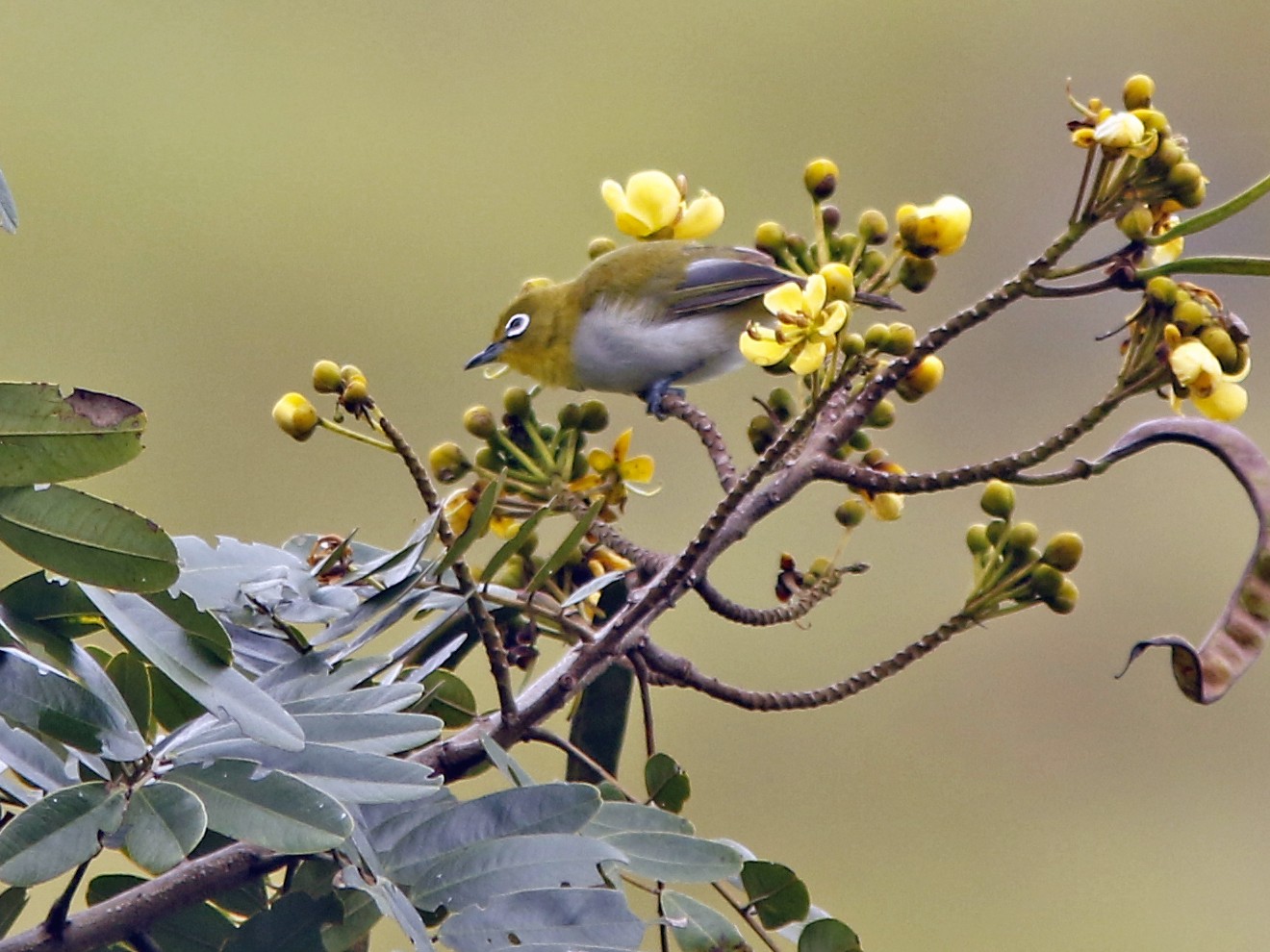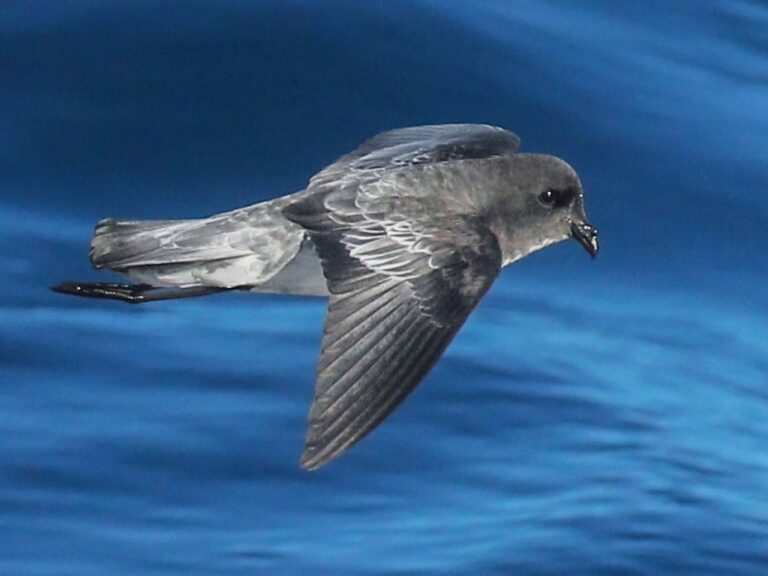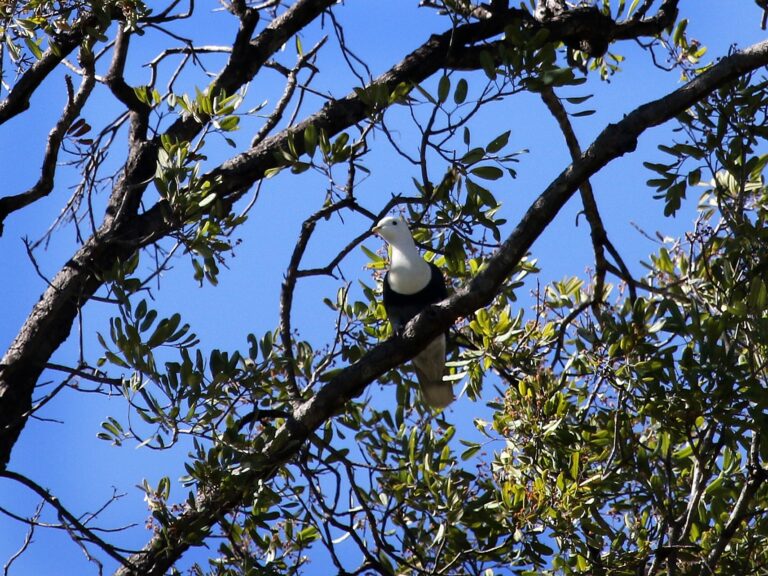Ashy-bellied White-eye: Habitat and Behavior Insights
The Ashy-bellied White-eye is a fascinating bird that captures the interest of birdwatchers and nature enthusiasts alike.
This small songbird belongs to the Zosteropidae family and is known for its distinctive features and behavior.
Found primarily in the tropical regions, it plays a key role in its ecosystem and contributes to the biodiversity of its habitat.
With its unique morphology, this bird can be identified by its ashy coloration and striking eye markings.
These birds inhabit various environments, adapting well to their surroundings.
Their interactions with other species and the conservation challenges they face make them an important focus for studies on ecology and preservation.
By understanding this species, observers can gain insight into the health of their ecosystems and the impact of environmental changes.
As interest in wildlife increases, recognizing the significance of these birds becomes essential for conservation efforts.

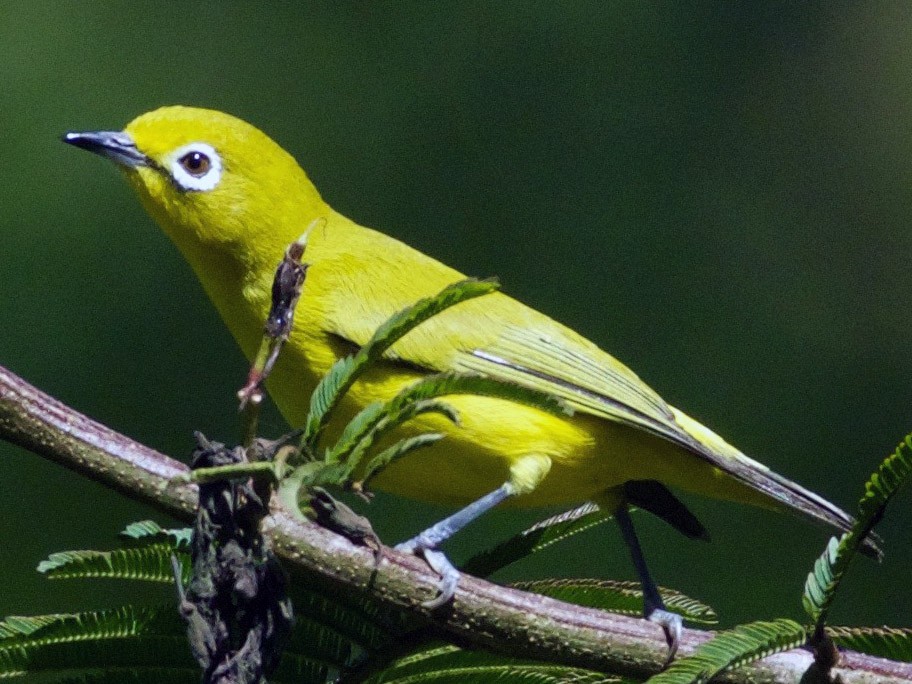
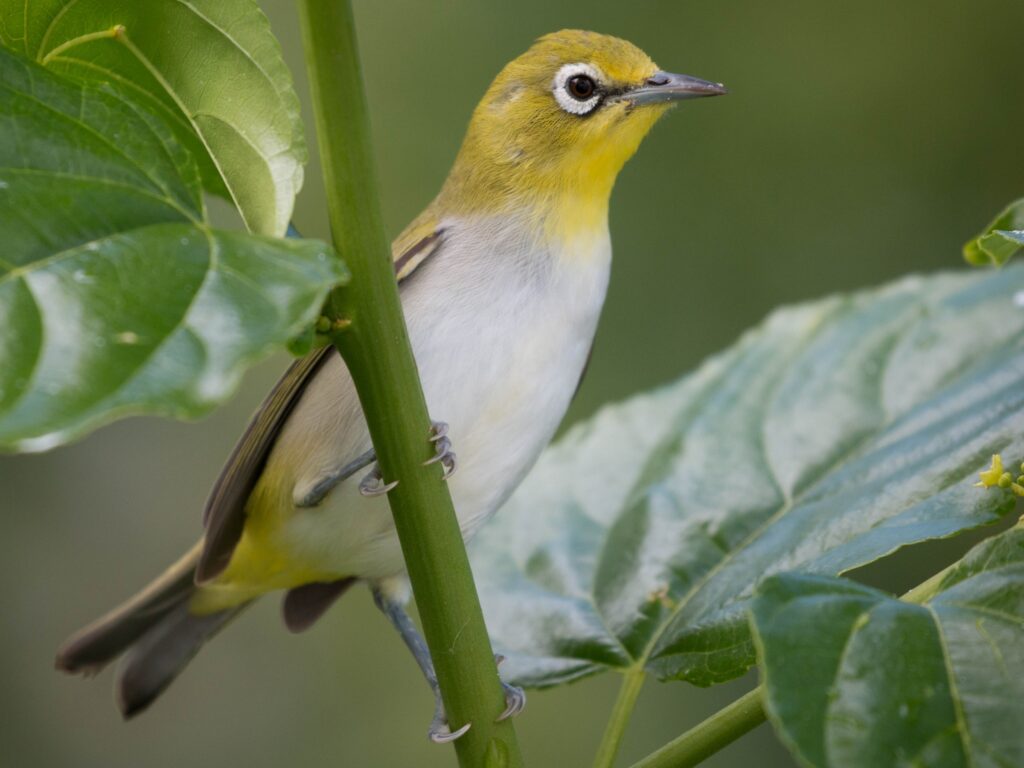
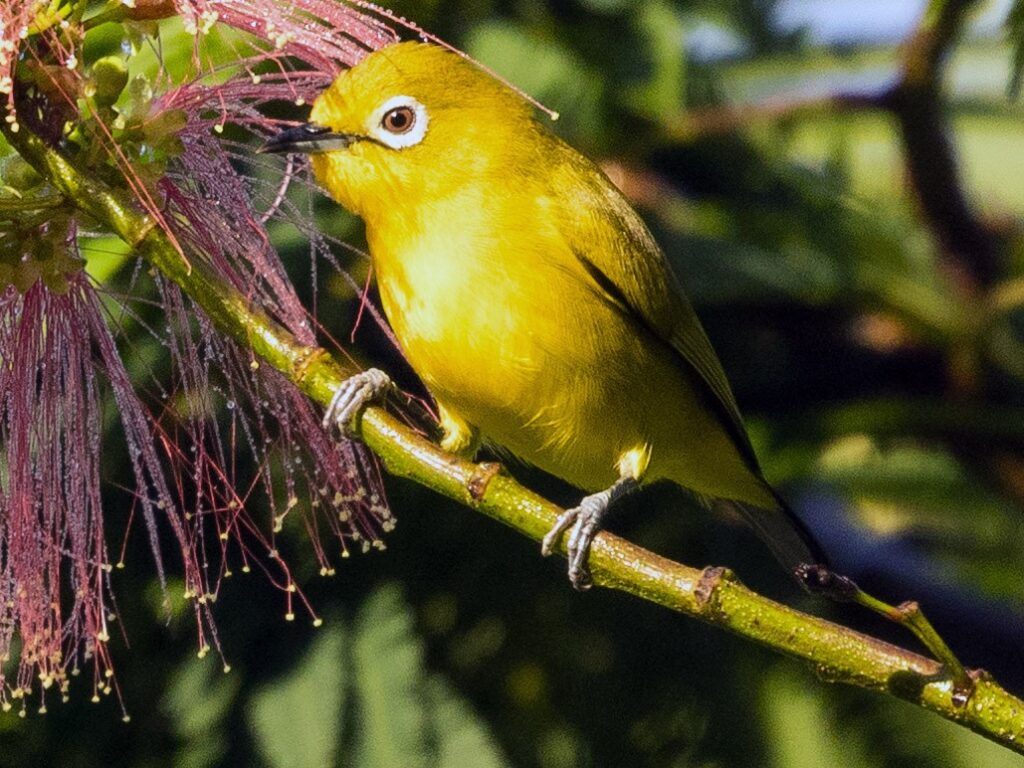

Key Takeaways
- The Ashy-bellied White-eye is part of the Zosteropidae family and is significant to its ecosystem.
- Its unique physical traits aid in its identification in the wild.
- Conservation efforts are crucial for understanding and protecting this interesting species.
Taxonomy and Evolution
The taxonomy of this bird illustrates its classification within the broader context of the Zosterops genus.
This section explores its species classification, subspecies variation, and evolutionary lineage, providing a clear understanding of its role in the avian family.
Species Classification
This species is scientifically named Zosterops citrinella.
It belongs to the family Zosteropidae, commonly known as white-eyes. This genus contains many species, but Zosterops citrinella is notable for its distinctive features, such as its pale gray body and yellowish belly.
Taxonomically, it is positioned among other white-eye species found across various islands.
The classification reflects both its evolutionary relationships and its habitat preferences, notably within Southeast Asia and surrounding islands.
Subspecies Variation
Zosterops citrinella has several recognized subspecies, which can exhibit variations in plumage and geographical distribution.
These subspecies often adapt to their specific habitats, leading to differences in appearance and behavior.
For example, the subspecies native to certain islands may display more vivid coloration or vary in size compared to their counterparts on the mainland.
This variation highlights the influence of environmental factors on the species’ evolution. Local populations may also show unique traits developed through isolation.
Evolutionary Lineage
The evolutionary lineage indicates a complex history influenced by geographical separation and natural selection.
Research within the genus Zosterops shows that these birds have undergone significant speciation events due to their island habitats.
Molecular studies suggest a radical revision of species limits in this genus, revealing a rich diversity among populations.
This evolution was driven by isolation on islands, leading to distinct evolutionary paths. The Ashy-bellied White-eye reflects broader patterns of adaptive radiation seen in island species, emphasizing the importance of its habitat in shaping its evolutionary story.
Morphology and Identification
This small bird, scientifically known as Zosterops palpebrosus, showcases unique physical traits and characteristics that aid in its identification.
Through examining its physical features, distinctive markings, and comparative anatomy, one can accurately recognize this bird within its family, Zosteropidae.
Physical Characteristics
This bird is typically ranging from 10 to 12 centimeters in length. Its body is compact with a rounded shape.
The plumage is primarily olive-green on the upper parts, while its underbelly presents a light, ashy color.
They possess a short, slightly curved bill that is suited for feeding on insects and fruits. The legs are slender and adapted for perching rather than walking. This species has small, bright eyes, which are characteristic of its family.
Distinctive Markings
One of the most distinguishing features is the prominent white eye-ring, which contrasts sharply with its olive plumage. This eye-ring is particularly useful for identification among similar species.
The wings and tail are darker, providing a striking contrast to the lighter belly.
Some individuals may have subtle variations in coloration between different regions. The Ashy-bellied White-eye does not have any elaborate plumage patterns, which helps in simplifying identification in its habitat.
Comparative Anatomy
In comparison to other white-eye species like Zosterops japonicus and Zosterops everetti, the Ashy-bellied White-eye has unique anatomical features.
While Zosterops japonicus might display a more yellow belly, the Ashy-bellied stands out with its ashy coloration.
The skeletal structure of the Ashy-bellied allows for quick flight, which is common among Zosteropidae. Its wing shape is designed for agile movements through dense foliage. This comparative anatomy highlights adaptations that support its lifestyle and ecological niche within its environment.
Habitat and Distribution
The Ashy-bellied White-eye is a bird species with a specific geographic range and distinct habitat preferences. Understanding these aspects is crucial for conservation efforts and to appreciate its ecological role.
Geographic Range
The Ashy-bellied White-eye is primarily found in the Lesser Sundas, with significant populations across islands like Timor and Alor. Its presence extends to parts of Sulawesi, where it occupies both lower and higher elevations.
This bird typically thrives in coastal regions, often spotted in mangrove forests and nearby areas.
The distribution of the Ashy-bellied White-eye may be affected by habitat loss and changing environmental conditions, making it vital to monitor these populations.
Habitat Preferences
This species favors a range of habitats. They are commonly seen in mangrove forests, where they forage for insects and fruits.
In addition, they inhabit savanna regions that provide a mix of open space and tree cover.
The Ashy-bellied White-eye is adaptable but tends to avoid heavily disturbed areas. They prefer environments that offer shelter and food, making their habitat selection vital for their survival and reproduction.
Regional Ecosystems
The ecosystems that support the Ashy-bellied White-eye are diverse.
In Timor and Alor, they occupy environments that mix rainforests with more open landscapes. These regions host various plant species that provide necessary food sources.
Furthermore, the bird’s role in these ecosystems is significant.
As an insectivore and fruit-eater, the Ashy-bellied White-eye contributes to seed dispersal and controlling insect populations. Protecting its habitat is essential for maintaining ecological balance in these areas.
Behavior and Ecology
The Ashy-bellied White-eye exhibits interesting behaviors and ecological adaptations that enhance its survival. Key aspects include its feeding habits, breeding and nesting practices, and interactions with other species. Understanding these dynamics highlights the bird’s role within its habitat.
Feeding Habits
This bird primarily forages in dense forest canopies.
It displays a generalist diet that consists of nectar, fruits, and insects.
Their foraging behavior often involves moving quickly through branches, searching for food.
This bird has a unique adaptation to feeding on nectar. It has a slender beak that allows access to flowers with narrow openings.
The Ashy-bellied White-eye plays a crucial role in pollination, moving from flower to flower as it feeds. Fruits are also an essential part of its diet, particularly during breeding seasons when food is scarce.
Breeding and Nesting
Breeding season for the Ashy-bellied White-eye usually coincides with wetter months, ensuring ample food availability.
They build small, cup-shaped nests high in tree branches, using materials like leaves, vines, and spider silk.
Nests are well-hidden, providing protection from predators. Females typically lay 3-4 eggs, which they incubate for about 12 to 14 days.
Both parents participate in feeding the chicks after hatching, showcasing a cooperative breeding behavior.
Inter-species Interactions
The Ashy-bellied White-eye often interacts with other bird species within its habitat.
It can be seen foraging alongside other Zosterops species. These interactions frequently lead to mixed-species flocks, enhancing foraging efficiency.
Social structures within these flocks are fluid.
The Ashy-bellied White-eye is generally tolerant of other birds, which aids in reducing predation risks.
Additionally, the presence of other species can improve access to food resources, as they share information about food availability and safety, creating a dynamic ecological environment.
Conservation Status
The conservation status of the Ashy-bellied White-eye is essential for understanding its population dynamics and the measures needed to protect it. This section covers current trends in its population, existing protection measures, and habitat conservation efforts.
Current Population Trends
The Ashy-bellied White-eye is currently classified as “Least Concern” by the IUCN. This classification suggests that the species is not facing significant immediate threats.
However, there are concerns about habitat loss and environmental changes that could impact its population.
Studies indicate that while some populations are stable, localized declines have been reported in certain regions.
Urbanization and agriculture can lead to habitat fragmentation, which disrupts breeding and feeding grounds. Continuous monitoring is crucial to keep track of any shifts in population trends.
Protection Measures
To ensure the Ashy-bellied White-eye remains stable, several protection measures are in place.
Conservation organizations work to raise awareness and implement programs aimed at preserving its habitat.
Legal protections exist in various countries that help regulate land use and prevent habitat destruction.
Efforts include establishing protected areas where the species can thrive without disturbances.
Educational programs for local communities also play a vital role in promoting coexistence with wildlife.
Active participation in conservation initiatives is key to maintaining their populations.
Habitat Conservation
Habitat conservation is vital for the Ashy-bellied White-eye’s survival.
Its natural habitats include forests and woodlands, which are essential for feeding and nesting.
Conservationists focus on restoring these ecosystems to ensure the species has adequate resources.
Efforts concentrate on reforestation and maintaining the ecological integrity of forests.
Creating corridors between fragmented habitats allows for better movement and gene flow between populations.
Collaborative programs between governments and NGOs facilitate effective habitat management strategies to support the species’ long-term viability.
Interaction with Humans
The Ashy-bellied White-eye engages with humans in various meaningful ways.
Birdwatching, habitat management, and conservation education all play vital roles in the relationship between this species and people.
Birdwatching
Birdwatching has become increasingly popular, offering enthusiasts the chance to observe the Ashy-bellied White-eye in its natural habitat.
This small, vibrant bird attracts many birdwatchers due to its unique appearance and behaviors.
Regions where these birds reside often benefit from ecotourism initiatives.
Local economies can thrive as visitors come to experience rich birdlife.
Tour guides and birding events often focus on habitats important for the Ashy-bellied White-eye, promoting awareness and appreciation among the public.
Habitat Management
Effective habitat management is crucial for preserving the environments where Ashy-bellied White-eyes thrive.
These birds occupy forested areas, relying on mature trees and dense foliage for nesting and foraging.
Active management practices, such as removing invasive species and planting native trees, help improve their habitats.
Organizations like BirdLife work closely with local communities to promote sustainable land use.
By ensuring that forest ecosystems remain intact, they help protect the Ashy-bellied White-eye and its habitat.
Educating locals about wildlife’s importance can lead to better stewardship of these areas.
Conservation Education
Conservation education is essential in fostering a positive relationship between humans and the Ashy-bellied White-eye.
Programs aimed at local schools and communities raise awareness about this bird’s role in biodiversity.
Through workshops and informational sessions, participants learn how they can contribute to conservation efforts.
These initiatives highlight the interconnectedness of all species and promote environmentally friendly practices.
Community involvement in conservation leads to better protection for the Ashy-bellied White-eye and its habitat.
Frequently Asked Questions
The Ashy-bellied White-eye is a unique bird with specific traits and behaviors. Understanding its habitat, feeding habits, and conservation status provides insight into this species and its relatives.
What is the typical habitat of the Ashy-bellied White-eye bird?
The Ashy-bellied White-eye typically inhabits subtropical or tropical moist lowland forests. It can also be found in mangrove swamps and bamboo forests. These environments provide ample food and nesting opportunities for the bird.
How can one distinguish between the Ashy-bellied White-eye and similar species?
The Ashy-bellied White-eye can be distinguished by its ashy-gray belly and bright yellow underparts.
Other similar species may have different belly colors or markings. Observers can also note its distinctive white eye-ring.
What are the feeding habits of the Ashy-bellied White-eye?
The Ashy-bellied White-eye primarily feeds on insects and fruits.
It forages in the canopy and often moves in small groups. The bird is known to glean food from leaves and branches.
What are the conservation statuses of the Ashy-bellied White-eye and its relatives?
Current assessments indicate that the Ashy-bellied White-eye is not under significant threat. However, habitat loss poses risks to its population.
Related species may have varying conservation statuses based on their specific habitats and threats.
How does the vocalization of the Ashy-bellied White-eye differ from its relatives?
The Ashy-bellied White-eye has a distinctive, high-pitched call that sets it apart from similar species.
Its vocalizations are often described as melodious and tinkling. These calls play a key role in communication, especially during mating season.
What are the breeding behaviors and patterns of the Ashy-bellied White-eye?
Breeding typically occurs in the warmer months when food is abundant.
The Ashy-bellied White-eye builds a cup-shaped nest in dense foliage.
Both parents usually assist in caring for the young after they hatch.
